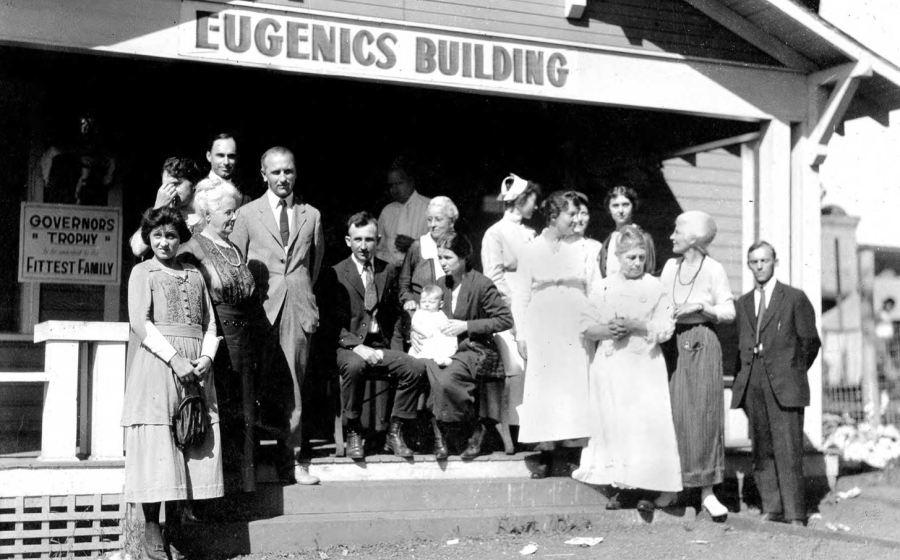America’s Disturbing Scientific Influence on the Nazi’s
March 24, 2023
When Americans think back to the horrifying and disgusting acts of the Holocaust, we rarely think about America’s role in it. Most Americans will tell you that we had nothing to do with it. The unfortunate truth, however, is that American scientists and politicians had an influence on the ideology of the Nazi Party. This is most likely going to be new information for many, as it is an idea that is rarely discussed due to its embarrassing nature.
In the late 1800’s, a new science called eugenics was coined by Sir Francis Galton of England. The idea of eugenics, rooted in the introduction of Mendelian genetics in the 1860’s is that a better human race can be selectively bred to force positive evolution on our species. Galton discovered that traits in humans could be selectively bred, but his assumptions about which traits were linked were not entirely correct. This ideology spread throughout various conferences in Europe during the early 1900’s, including Galton’s 1904 speech at the London School of Economics, which featured many of England’s highest societal elites. Eight years later, just two years before the first World War, the First International Conference on Eugenics was held in London. Among those at the meeting were Winston Churchill, Alexander Graham Bell, and Charles Elliot, the president of Harvard University. German delegates gave a talk about “race hygiene”, but even worse was the speech given by American scientist Bleeker Van Wagenen, who had been trained by famous Harvard zoologist Charles Davenport. Davenport was at the helm of the American Eugenics movement, having written a highly influential book titled Heredity in Relation to Eugenics. While the European speeches at the conference were all theoretical, Americans had already started work on putting theories of eugenics into practice. At the time, eight states had already passed laws allowing sterilization of those deemed unfit to reproduce, such as criminals, alcoholics, deaf-mutes, etc. Sadly enough, major funding for the eugenics movement came from the major corporations of the time such as the Rockefeller Foundation, Carnegie Institution, and Harriman fortune. In 1911, The Carnegie Institution even suggested gas chambers as a means of euthanasia for those with genetic defects.
From the beginning of the 20th century, Americans participated in toxic eugenic trends such as “Better Baby Contests” and “ Fitter Family” checks. Unsurprisingly, these contests were highly discriminatory and in many cases barred immigrant and black families. A major ruling that furthered the movement was the 1927 Supreme Court Case Buck v. Bell. It upheld the Virginia Sterilization Act of 1924, which allowed for sterilization of those housed in mental institutions. This set a nationwide precedent for eugenics and sterilization. Between 1907 and 1963, 64,000 individuals were forcibly sterilized in the United States.
Before 1930, Germany was developing a strong pro-Aryan and pro-Nordic ideology in its own right. There was a strong link between scientists from California and Germany, who would send each other new literature promoting sterilization, and the Rockefeller Foundation was actively funding German eugenics research and programs, to the point where over 5,000 people a month were being sterilized in Germany in 1934. The German anger over their loss in World War I as well as the newfound eugenics movement created the storm of ideology that was soon directed toward the Jewish people of Europe. In 1934, C.M. Goethe, a California scientist and eugenics leader, wrote to his colleague saying, “You will be interested to know that your work has played a powerful part in shaping the opinions of the group of intellectuals who are behind Hitler in this epoch-making program. Everywhere I sensed that their opinions have been tremendously stimulated by American thought … I want you, my dear friend, to carry this thought with you for the rest of your life, that you have really jolted into action a great government of 60 million people.” It is clear that American scientists were no strangers to the Nazi movement and chose to turn a blind eye because they were corrupted by their own successes. The Nazis were influencing American-funded programs in Germany via major corporations and legislation in America such as the 1924 Virginia Racial Integrity Act and the aforementioned Buck v. Bell ruling. Nazi party members like Josef Mengele, the “Angel of Death” who performed gruesome medical experiments on prisoners at Auschwitz, even worked in American-funded programs before World War II.
After the conclusion of the war, scientists in America tried to separate themselves from their German counterparts in order to try and reduce the blame and embarrassment on themselves. When learning about the World Wars, allow yourself to consider the idea that American scientists and politicians were not blind to the horrors occurring.
Such historical facts are deeply disturbing to learn about as an American, but it is important to acknowledge history like this. History informs the modern world and teaches us to be better. We are in a time where genetic science is more powerful than it has ever been, which should lead us to be deeply cautious about new ideologies that could be devastating to certain groups of people. Always question what is happening in the world, and if you are interested in an in-depth view of this topic, I recommend reading The Gene by Siddhartha Mukherjee.

